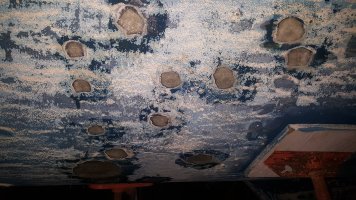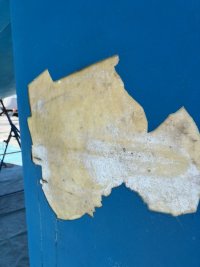Interesting thread with a healthy dose of competing views!
I should add my $.02--and experience from my previous, 1987 E-38-200: like Pete's Tartan,
Walden had
hundreds of blisters, ranging in size from a fist to that of a (human) head, under (and/or within) a few layers of barrier coat, that had been applied about 5 or 6 years prior (this was in 2019).
Initially, we had thought the blisters proliferated because the yard applied the barrier coat
over the
pre-
existing blisters without first fixing them, but after reading Pete's posts (in anticipation of purchasing another E-38-200), I'm not so sure. Since these blisters were so large--undoubtedly penetrating into the first layer or two of laminate in many cases--we ground all of them out and laid up new glass with various sizes of mat and epoxy. We then primed and painted with new ablative paint, without applying more barrier coat first.
Almost
every time we ground a blister open, foul smelling resin-water slurry came shooting out. In most areas requiring repair, delamination was present--which required grinding out a wide and flat, large surface to apply new glass. After going through such an ordeal, I decided in the future, I would hire out bottom prep, i.e. sandblasting (since the job took so many months of almost daily work). All of this is to say, I would be a bit dubious about having an old boat with existing blister problems barrier-coated again; I think a bottom "peel" and re-glassing of the CSM layer (before barrier coat) could be different.
Some pictures:







